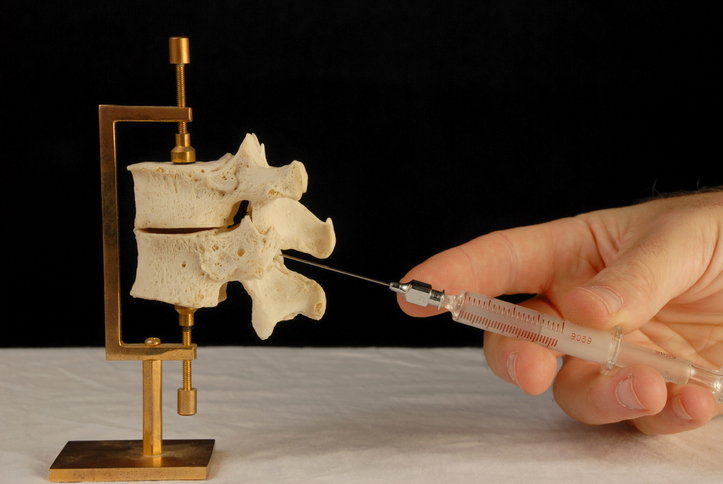Treatments
Risks and Benefits of Epidural Steroid Injections

What are epidural steroid injections?
Epidural steroid injections consist of the delivery of corticosteroids into the epidural space via a syringe. The epidural space is the fat-filled area covering the spinal cord. It protects the spinal cord and surrounding nerves from damage. Many people confuse an epidural anesthesia injection, widely known to relieve pain as women are giving birth, with an epidural injection.
Epidural injections can help manage chronic pain and relieve pain during and after surgery. They can provide long-lasting pain relief with few side effects. Diagnostic epidurals can help with identifying underlying causes of pain.
Risks
As with any medical procedure, certain risks are involved. Potential risk and complications from the injection include, but are not limited to, the following:
- Low blood pressure
- Hematoma
- Severe headache
- Nerve root damage
- Allergic reaction to medication
- Infection
- Low-level radiation exposure (if fluoroscopy is used)
- Temporary increase in pain
- Dural puncture
Steroid medication
Steroids, also called corticosteroids, are typically used in epidural steroid injections. It is an anti-inflammatory medication, which can reduce inflammation and immune system activity. Steroids come with their own risks and benefits. Be sure to discuss this with a health care professional prior to receiving an epidural steroid injection.
Benefits
Epidural steroid injections may be beneficial for various reasons. This includes, but is not limited to, the following:
- Pain relief lasting from several days to several months or longer
- Assists in diagnosing pain origin
- Alternative to more invasive procedures
- Improved functioning

















